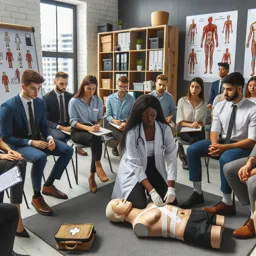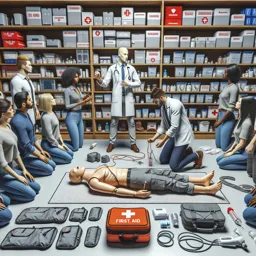Introduction
Having a well-structured workplace first aid program is vital for ensuring the safety and wellbeing of all employees. Regardless of the industry, unexpected accidents and health emergencies can occur at any time. A proactive approach to first aid in the workplace not only minimizes the risk of serious injuries but also reinforces a culture of care and responsibility within the organization.
Why Workplace First Aid Matters
Workplace first aid preparedness has several critical benefits. Prompt response to injuries or medical events can reduce recovery times, prevent complications, and in some cases, save lives. Moreover, organizations that invest in first aid training and resources demonstrate compliance with occupational health and safety standards, enhance employee morale, and reduce downtime caused by workplace incidents.
Core Elements of a First Aid Program
1. Hazard Assessment
Start by identifying potential hazards in the work environment. This assessment helps determine the types of injuries or illnesses most likely to occur, guiding the selection of suitable first aid measures and supplies.
2. First Aid Kits and Supplies
Ensure that first aid kits are readily accessible, well-stocked, and tailored to workplace risks. Items such as bandages, antiseptics, gloves, burn treatments, and emergency contact lists should be included.
3. Trained First Aid Responders
Designate certain employees as first aid responders and provide them with appropriate training. Refresher courses should be conducted regularly to maintain competency.
4. Clear Reporting and Response Procedures
Develop and communicate procedures for reporting injuries and responding to medical emergencies. All staff should understand their role when an incident occurs, whether it’s alerting a trained responder or contacting emergency services.
5. Regular Program Evaluation
Periodically review your first aid program for effectiveness. Seek feedback from employees, monitor incident trends, and adjust protocols or supplies as needed.
Promoting a Safety-First Culture
Encourage a culture where safety and first aid awareness are part of daily routines. Post visual reminders, hold training sessions, and recognize employees who contribute to maintaining a safe environment. This continuous awareness reduces the likelihood and severity of workplace incidents.
Conclusion
An effective workplace first aid program is more than a regulatory requirement; it is a demonstration of an employer’s commitment to staff wellbeing. By understanding the core components and continuously improving your first aid readiness, you create a safer, healthier place to work for everyone.




























